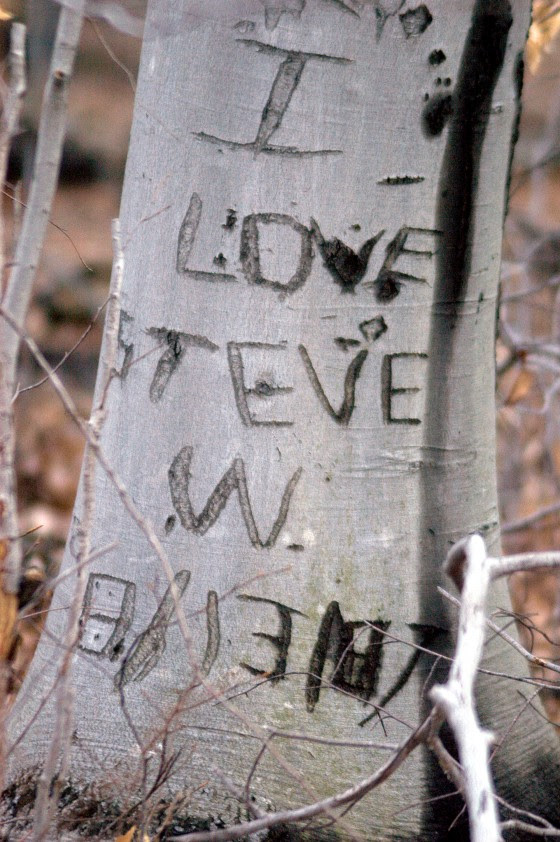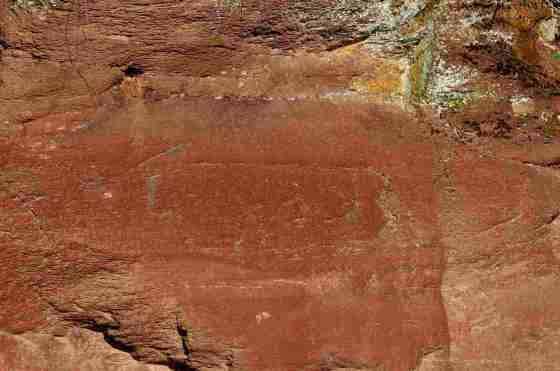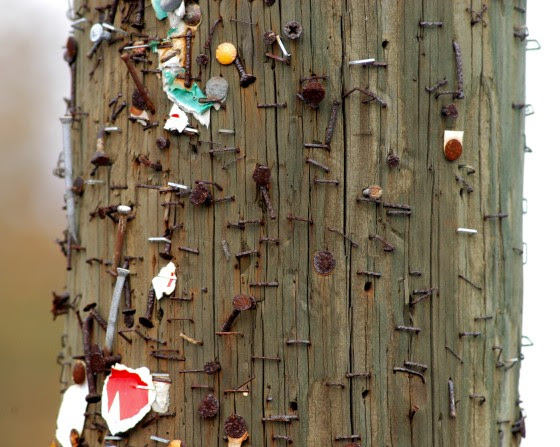It’s Carved In Stone
Article and photos by Joe Mish

The stone plaque set in the fieldstone bridge over Cat Tail Brook is crudely chiseled with the date 1825 along with the name of the mason and men who directed its construction.
The graves of the early settlers preserved in a small patch of land are marked with red shale stones, some with hand carved epitaph’s, other small, weathered stones barely decipherable, some messages completely eroded.
A block of shale rests in the river with the inscription J N Stout along with the Roman numeral XVI. Well into the twentieth century, property lines were represented by rocks or trees with slash marks.
The need to communicate is an innate human behavior, messages scribed on whatever canvas is available, whether it be scribbled on a napkin, roadside billboard, or graffiti on the side of a building. From the Chauvet Pont d’ arc caves of France and their well-preserved pictographs, to the Parsippany petroglyphs in north Jersey, each generation of humans, worldwide, expressed themselves in the most rudimentary ways, using whatever medium was on hand.
My interest is in the paleo or pre-colonial people who lived in our area whose rationale for leaving signs and messages is no different than those seen today. Messages that were the precursor of books, told stories of the hunt or other rituals in pictographs, dendroglyphs and petroglyphs. Pictographs are paintings placed in a protected area, dendroglyphs were images carved into a tree who bark had been partially stripped, petroglyphs were figures carved or etched into stone, usually in the open for travelers to see.

In the book, “Rock Art of Eastern North America”, the author notes the scarcity of primitive art in the eastern woodlands versus the numerous examples in the western states, primarily due to climate. As trees were the dominant canvasses of the woodlands, trees carved with dendroglyphs are not likely to be found. The rock strewn Sourland mountains would be a prime location for glyphs, while in the glacial scoured highlands of northern NJ, petroglyphs been authenticated.
An example noted in the book explains dendroglyphs were located on well-travelled trails, river crossings and prominences. The topography of the land was also a factor as it restricted or directed travel around obstacles, along rivers or mountain trails. Humans as well as wildlife seek out paths of least resistance as well as places which provide a view. What traveler has not succumbed to the temptation to climb a huge boulder alongside a hiking trail? In paleo times that rock was a safe place to camp, seek refuge from a wolf, or ambush a deer. Some successful hunter might leave a mark to commemorate his luck.
Without having read or heard of such a ritual, I would leave a coin where a deer fell to my arrow. I don’t know why I did that; no one will ever find that coin. Maybe a lingering primal behavior acted out to ensure my clan’s survival by telling another hunter, that the location was a good place to hunt.
The South and North branch and Raritan rivers are prime places to look for petroglyphs on the shale cliffs. You are not likely to discover one, but certainly these would be the places to look. Indian artifacts abound and stories of local collectors are many. The cliffs protruding from the flood plain attracted passersby to the precipice, to see what they might see. We can only imagine a glyph carved into a nearby tree by the Unami clan, represented by the image of a turtle. Perhaps it marked territory, a place to camp or images of a turtle holding a tomahawk to signify a war party, as mentioned in the Rock Art book. Chance of finding artifacts at these outcroppings are greater than finding stone carvings.
Knowing that our rivers were the highways of pre-colonial times, I cannot resist re-examining one particular, smooth red shale cliff, for the remains of an eroded petroglyph. That rare, smooth red shale canvas must have served as a primitive billboard with images of fish and deer taken by the Unami clan. I can’t find a sign, but I keep on looking at that cliff as if the imagined carvings were somehow transcribed to mental images perceived only by kindred spirits who traveled the same watery path.


Author Joe Mish has been running wild in New Jersey since childhood when he found ways to escape his mother’s watchful eyes. He continues to trek the swamps, rivers and thickets seeking to share, with the residents and visitors, all of the state’s natural beauty hidden within full view. To read more of his writing and view more of his gorgeous photographs visit Winter Bear Rising, his wordpress blog. Joe’s series “Nature on the Raritan, Hidden in Plain View” runs monthly as part of the LRWP “Voices of the Watershed” series. Writing and photos used with permission from the author. Contact jjmish57@msn.com.
